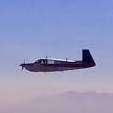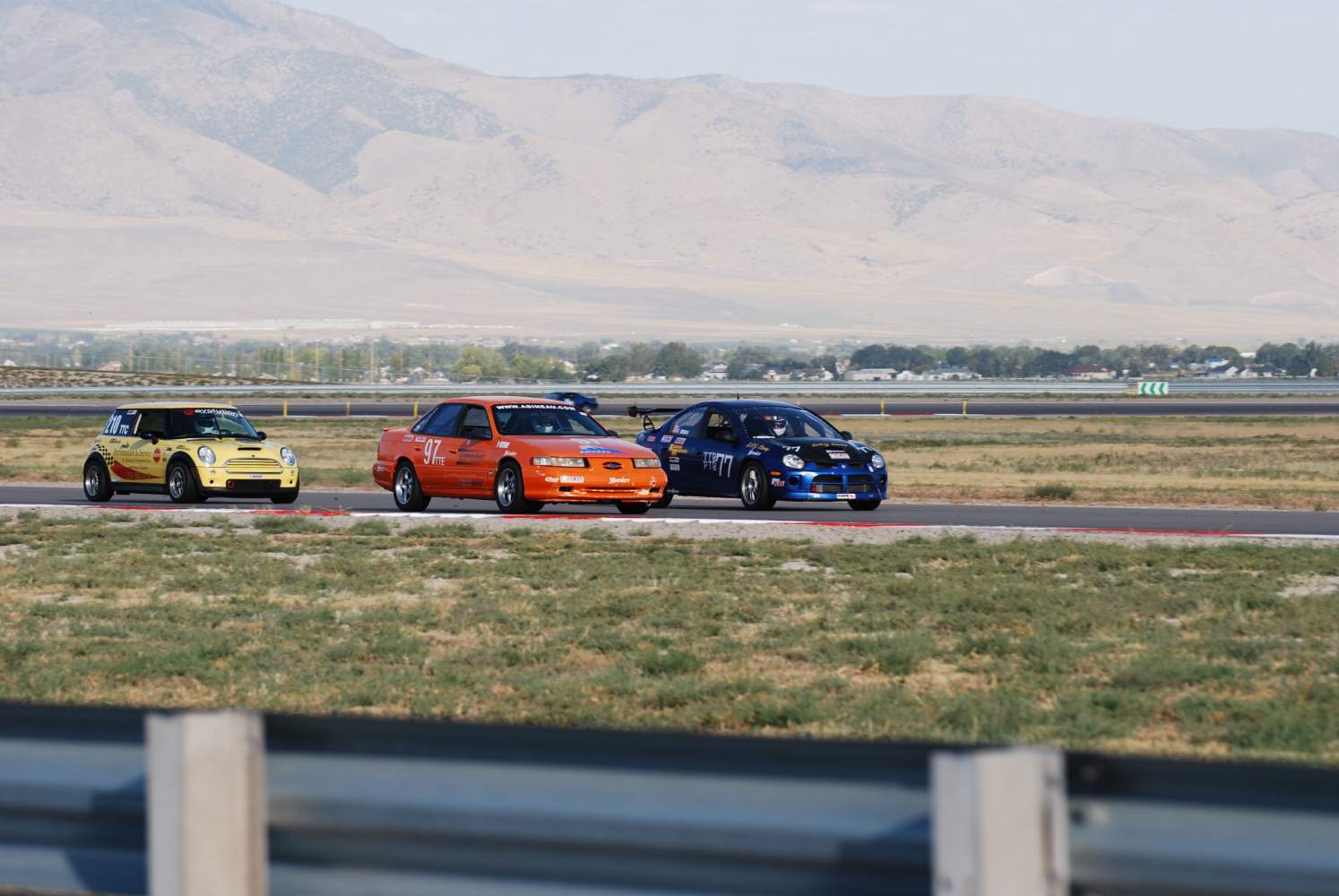-
Posts
9,541 -
Joined
-
Last visited
-
Days Won
107
Content Type
Profiles
Forums
Blogs
Gallery
Downloads
Events
Store
Everything posted by EricJ
-
Aviation applications seem to be paranoid about grounds, and tend to put more than needed. I suspect this is just for redundancy, but there may be some static/lightning mitigation going on as well. The pitot heater is just a resistive heater, so it doesn't care about polarity. A specific pitot tube may be made with one side grounded to the tube or mount, though, so it may be worth checking that.
-

IO-360 ‘warm engine’ start on M20J
EricJ replied to Tiny18Driver's topic in Modern Mooney Discussion
Two things to try that work for me depending on the situation: Prime like a cold start, but for about 1/2 the normal time. Then start like a cold start. This is usually what I do. Whatever you're doing, once it starts turn the boost pump on. If the problem is that the mechanical fuel pump is hot and cavitating, the boost pump will add input pressure and reduce the likelihood of cavitation (vapor lock). I do this at high DA or when it otherwise seems to have trouble starting. -

NEW NEWS FROM LASAR AND MOONEY AS OF 10/2/2025
EricJ replied to cliffy's topic in General Mooney Talk
If the "true cost" of a part is more than the market will bear in a sustainable fashion, then you can't charge that much. I think there was just a different assessment of the business and marketplace between the two managements. I'm not sure the new path is any smarter than the old one. Maybe less so. -

NEW NEWS FROM LASAR AND MOONEY AS OF 10/2/2025
EricJ replied to cliffy's topic in General Mooney Talk
That's the part I find least surprising. -
Research "Owner Produced Parts". There has been a lot of discussion here about it, there are many FAA presentations about it, etc., etc. Basically, you can make them or have them made for use on your own aircraft, there are several different ways in which you can "particpate" in the production to make it officially blessed as a properly produced part for use on your aircraft.
-
Many older airplanes (i.e., ours) have damage history. It's pretty normal for something to have happened over 40-60+ years. As long as it was properly repaired, there's usually not much consequence after a few years.
-
They may have seen something in the logbooks. You can ask them why they noted damage history.
-

Repair/Replacement Options for the Electric Cowl Flaps Motor
EricJ replied to JohnM's topic in Modern Mooney Discussion
Or just take it to an electric motor shop. -

Open Door In Flight training?
EricJ replied to wombat's topic in Mooney Safety & Accident Discussion
There's been cases where a nose cargo door opened and contents came out into the prop on that side. Those can be bad accidents. -
FWD has some exploitable advantages up to about 300hp, then it's just a lot harder to get an advantage out of it. Below that power level a good set of classification rules will level the playing field. Honda Civics have been popular as race cars for a long time, and still are. Minis have been raced effectively forever, too. Note that all three of the cars in the pic are FWD, and the other two are two and three classes above me (I wasn't racing those guys). IIRC that mini wound up taking the championship in his class that year. I beat a couple RWD cars that year including an RX-8, and got beat by a Nissan SE-R Spec-V (also FWD).
-
The Ford Taurus made a hell of a fine race car. This was me at NASA Nationals at Miller Motorsports Park in 2009 taking 2nd in national championship (my first time attending nationals). Set a lot of track records with that car.
-
Or airplanes that wound up being parted out due to corrosion.
-
A buddy had one of the latches on the cowl of his Cherokee fail and he lost the top half of the cowl in the pattern. It flipped up and landed flat agains the leading edge of one of the wings for a while, and then fell off into a neighborhood, never to be seen again. He just flew it as normal, told the tower his cowl came off (the tower guy had seen it and told him about where it landed), and returned to the field without further incident. It put a dent in one of the wing tanks, which isn't too difficult to replace on a Cherokee. Took a trip to one of the BAS yards and he was back in business. It is sad when something that could be, and should be, a non-event, isn't.
-
You can keep moving the goalpost, but there are still many counter examples.
-
I still do.
-
So we don't have friction losses any more?
-
There are lots of counter examples, like Indy, or the Silver State Classic, where they're pretty much WOT all the time. Penske's famous "beast" Indy motor was optimized for a very narrow range of rpm where it made power, because they knew that's where it'd be nearly all the time. There are a fair number of oval tracks, both paved and dirt, where you spend most of the time at WOT. Consumer-based cars gets raced on those all the time, too, for all kinds of crazy classes from skid plates to derbies. As long as there is sufficient cooling most stock street car engines have no trouble running WOT for very long, even indefinite, periods. They start to get fragile, or at least more fragile, when they're tuned/modified past stock and start increasing the stress on components and reducing or eliminating design margin. Normally aspirated cars are seldom a problem racing stock motors. Turbocharged cars seem to have a lot less design margin, especially in cooling capacity.
-
I was gonna suggest that as well, that it just looked like a poor-man's pressurization mod to a regular mag. Somebody may have been taking some high altitude trips and had some ignition hiccups and just decided to solve it that way.
-

Cigarette Lighter socket as USB power source
EricJ replied to PeterRus's topic in General Mooney Talk
It's not transparent to the user since the charging strategy is determined by the internal battery management system. They're not all done the same depending on what the manufacturer is optimizing (charge availability, longevity, etc., etc.). The "100%" charge level may just be what it allows the user to see, and what it's actually doing is something else. There's no way to know without knowing the details of the strategy, which is usually internal to the specific battery. As I mentioned, the behavior of certain tablets just between the consumer and ruggedized version was different, but in that case the visibility was passed to the user because of other concerns. It's usually not visible. -

M20J nose wheel collapse at KHEF
EricJ replied to Mooney in Oz's topic in Mooney Safety & Accident Discussion
I don't remember where I learned it, but if there's sufficient runway left a PIO cycle can be broken by application of just enough power during a bounce to arrest the pitch change into a stable attitude (e.g., to make the elevator work again). I used it once not long after I got my airplane just from screwing up a landing, and then again when the MP hose broke and idle RPM stayed much higher than usual during a landing (coupled with not paying sufficient attention). Works really well, and can be easily turned into a go-around if so desired. -

M20J nose wheel collapse at KHEF
EricJ replied to Mooney in Oz's topic in Mooney Safety & Accident Discussion
That's probably it. I bought my airplane with a new prop, new nosegear, and freshly IRAN'ed engine because it had been PIO'd into a nosegear collapse 40 hours earlier by the previous owner. -

M20J nose wheel collapse at KHEF
EricJ replied to Mooney in Oz's topic in Mooney Safety & Accident Discussion
That's a pretty unusual failure on a Mooney. I'm curious about what led to that. -
Glad you got the motor stuff sorted out. Do you still have a mechanical tach, too, or just the JPI?
-

Cigarette Lighter socket as USB power source
EricJ replied to PeterRus's topic in General Mooney Talk
The battery management systems on most modern battery packs will already limit charge to 80%, or whatever their determined limit is, and manage the battery cycles. When they show 100% (all lights, or whatever), they may really be at 80% to self-limit life management. We use some industrial ruggedized tablets that do that, but they really only show 80% when charging and just stop there, so they never show 100% except in some unique charging conditions. IIRC the battery in the Mooney that burned had been dropped on the pavement just before the flight. If something like that happens, be very careful with the battery. I use a pack that powers my Stratux ADS-B receiver. I plug the Stratux into the battery and the battery into a USB charge port adapter in the back seat. This keeps the Stratux on even between temporary ramp shutdowns, etc. Seems to work well that way and I've never had any trouble with it. -
If the engine is making enough heat, that type of cooler can produce enough thrust to cancel the drag it creates, so you wind up getting the cooler for free. Liquid cooling does add maintenance, weight and and additional failure modes, though.




